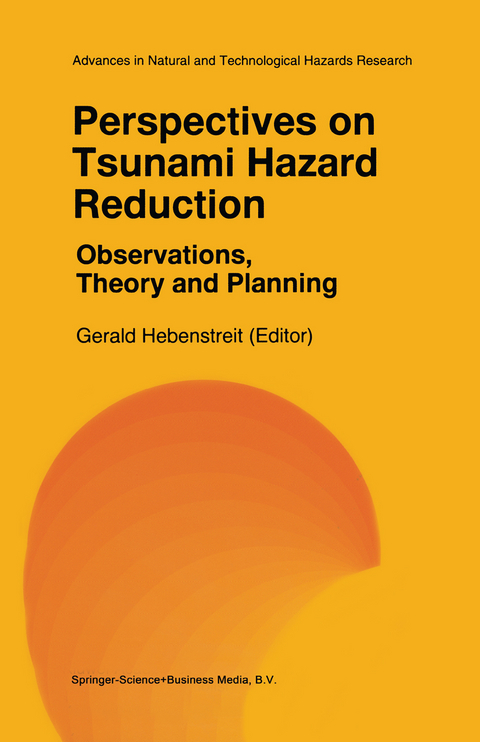
Perspectives on Tsunami Hazard Reduction: Observations, Theory and Planning
Springer (Verlag)
978-90-481-4938-4 (ISBN)
Tsunami Observations.- Coastal Effects and Damage Due to the 3rd June, 1994 Java Tsunami.- Expert Tsunami Database for the Pacific: Motivation, Design, and Proof-of-Concept Demonstration.- Local Responses to the October 4, 1994 Tsunami Warning: Washington, Oregon, and California.- Precise Tsunami Observation System in the Deep Ocean by an Ocean Bottom Cable Network for the Prediction of Earthquakes and Tsunamis.- Tsunami Theory.- Asperity Distribution of Alaskan-Aleutian Earthquakes: Implications for Seismic and Tsunami Hazards.- Numerical Simulation of 1993 July 12 Tsunami Near Hokkaido: Its Propagation and Flooding onto Aonae District, Okushiri Island.- Inverse and Forward Tsunami Modeling of the 1993 Hokkaido Tsunami.- Numerical Simulations of the 1627 Gargano Tsunami (Southern Italy) to Locate the Earthquake Source.- Tsunami Detection and Warning Capability using Nearshore Submerged Pressure Transducers — Case Study of the 4 October 1994 Shikotan Tsunami.- Short-Term Forecasts of Inundation During Teletsunamis in the Eastern North Pacific Ocean.- A Natural Warning of Tsunami Arrival.- Tsunami Hazard Planning.- The New Tsunami Warning System of the Japan Meteorological Agency.- Reducing Tsunami Hazards Along U.S. Coastlines.- Overview.- A Long-term Perspective.
| Erscheint lt. Verlag | 15.12.2010 |
|---|---|
| Reihe/Serie | Advances in Natural and Technological Hazards Research ; 9 |
| Zusatzinfo | VI, 218 p. |
| Verlagsort | Dordrecht |
| Sprache | englisch |
| Maße | 160 x 240 mm |
| Themenwelt | Naturwissenschaften ► Biologie ► Ökologie / Naturschutz |
| Naturwissenschaften ► Geowissenschaften ► Geografie / Kartografie | |
| Naturwissenschaften ► Geowissenschaften ► Geologie | |
| Naturwissenschaften ► Geowissenschaften ► Geophysik | |
| Naturwissenschaften ► Geowissenschaften ► Hydrologie / Ozeanografie | |
| Technik ► Umwelttechnik / Biotechnologie | |
| ISBN-10 | 90-481-4938-X / 904814938X |
| ISBN-13 | 978-90-481-4938-4 / 9789048149384 |
| Zustand | Neuware |
| Haben Sie eine Frage zum Produkt? |
aus dem Bereich


